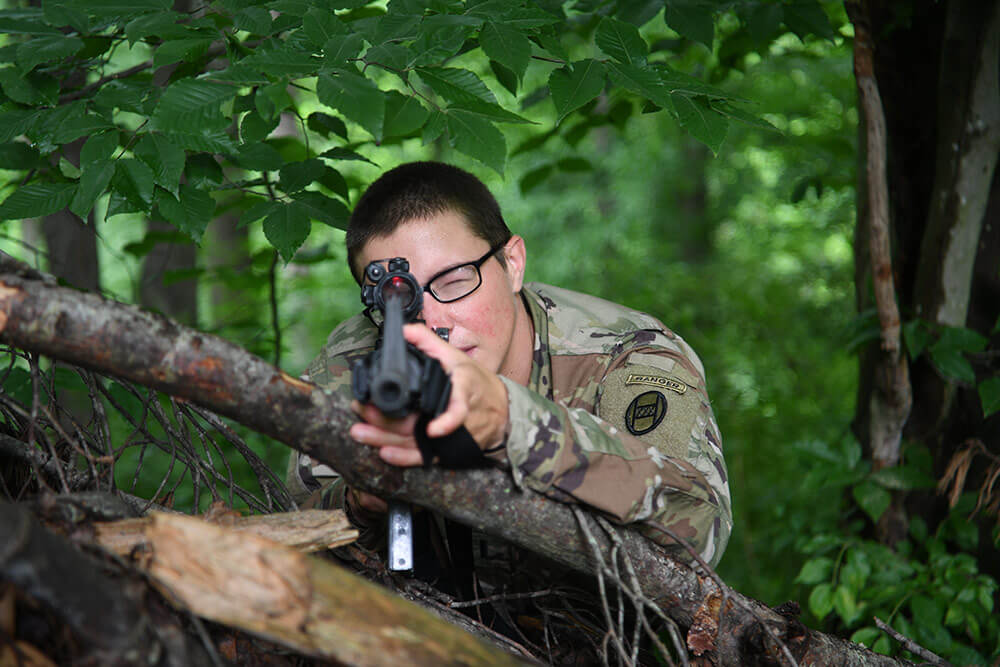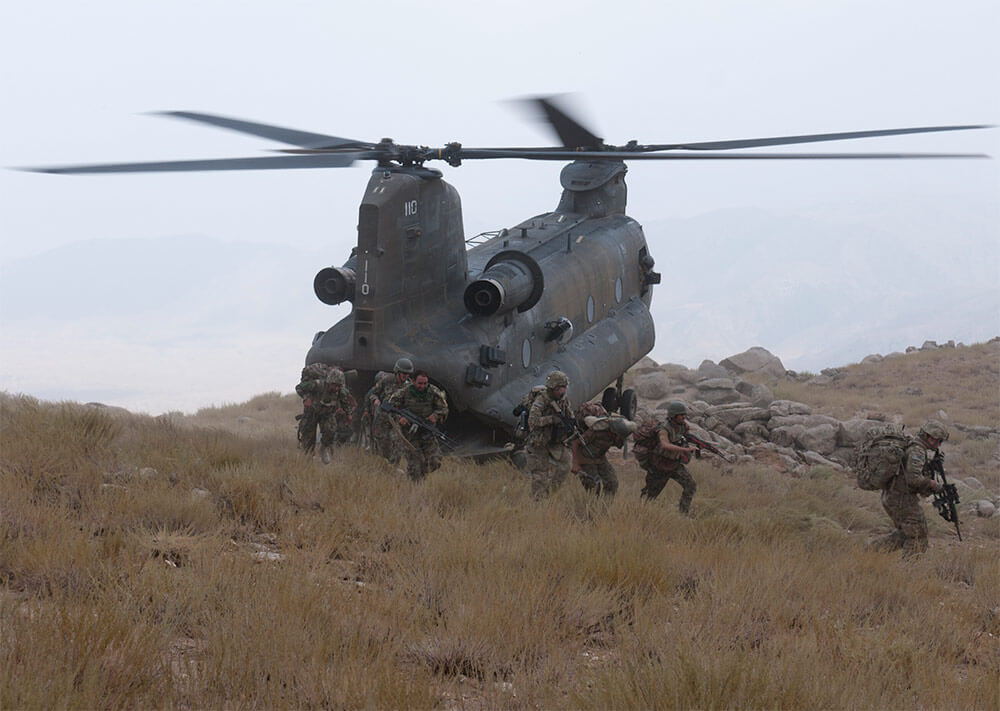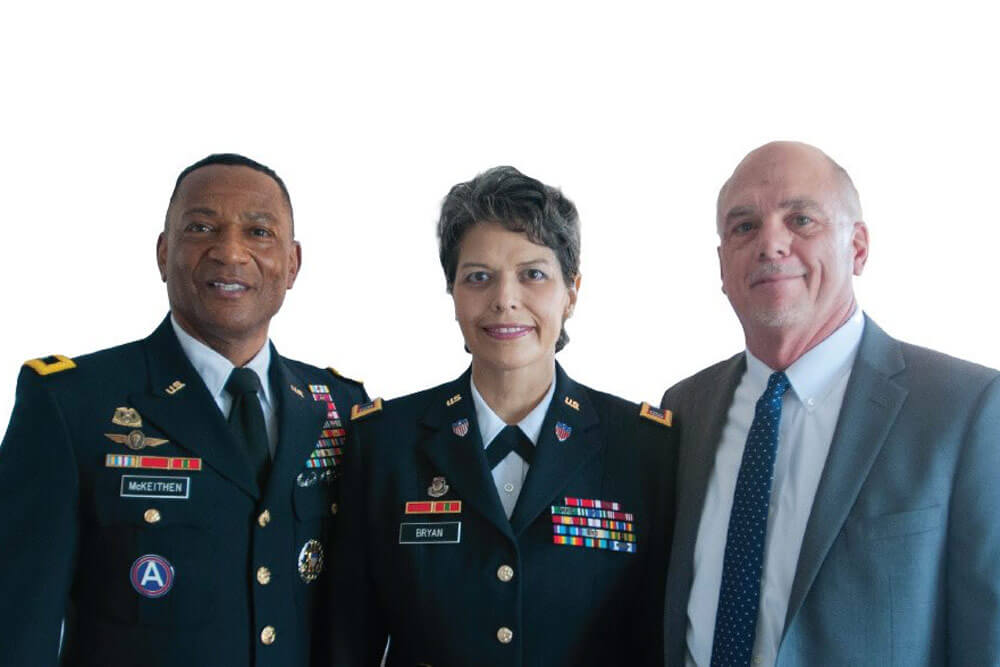JRTC Readies 48th IBCT Soldiers
To say that the 48th Infantry Brigade Combat Team (IBCT)’s Joint Readiness Training Center (JRTC) rotation was challenging would be a drastic understatement. The close to 5,000 Georgia Army National Guard Soldiers faced three weeks of grueling training that pushed them to the limits of their abilities. Located on Fort Polk, Louisiana, the JRTC is the Army’s premier combat training center (CTC).
This past May, the 48th IBCT was the first of two Army National Guard brigades to conduct rotations at the JRTC during the 2018 calendar year. It was the first brigade-sized rotation for the Georgia Army National Guard since 2009.
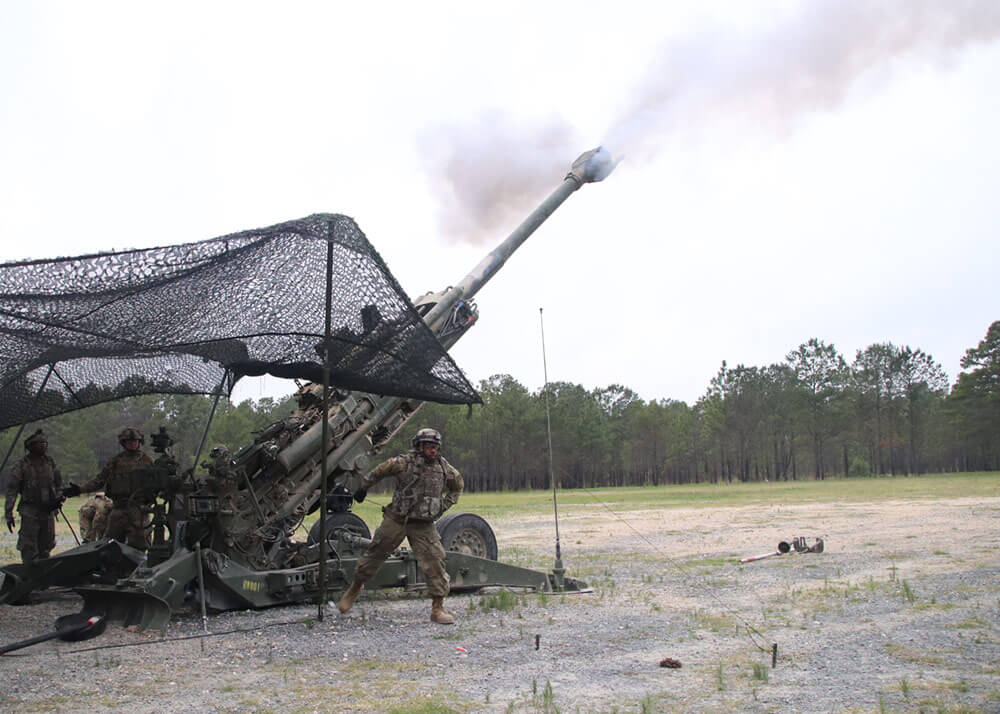
The rigorous training was completed in preparation for the combat team’s upcoming deployment to Afghanistan. It was designed to push Soldiers, both physically and mentally, by testing their high-stress, decision-making skills.
“It’s a high-intensity training environment. [It] stresses you out to the max on your systems,” said SGT William McInnis, an electronic warfare specialist with the 48th IBCT. “It ensures you can handle a combat scenario.”
The rotation garnered visits from Georgia Governor Nathan Deal and MG Joe Jarrard, adjutant general of the Georgia Department of Defense. They witnessed firsthand the strength and perseverance Soldiers displayed throughout the taxing exercise.
“It was a true honor and privilege to visit with the 48th Infantry Brigade Combat Team as they prepare to mobilize to Afghanistan,” said Deal. “From the commanders to the youngest members of the brigade, I’ve seen firsthand how tough and intelligent these extraordinary individuals are…our Soldiers are mission-ready and prepared to face any adversary that poses a threat to our Nation and people.”
Planning and preparation for the rotation started in November of 2016, calling for more than a year of logistical meetings and coordination.
“I think the biggest challenge was getting all our stuff there and then getting it back safely without anybody getting hurt, which we’re pretty proud of,” said COL Smith, brigade commander for the 48th IBCT. “We deployed roughly 5,000 people and about 2,000 pieces of equipment. We had no significant injuries getting stuff out and we had no significant accidents and likewise getting back home. It was a pretty big accomplishment and there’s a lot of training value in that.”
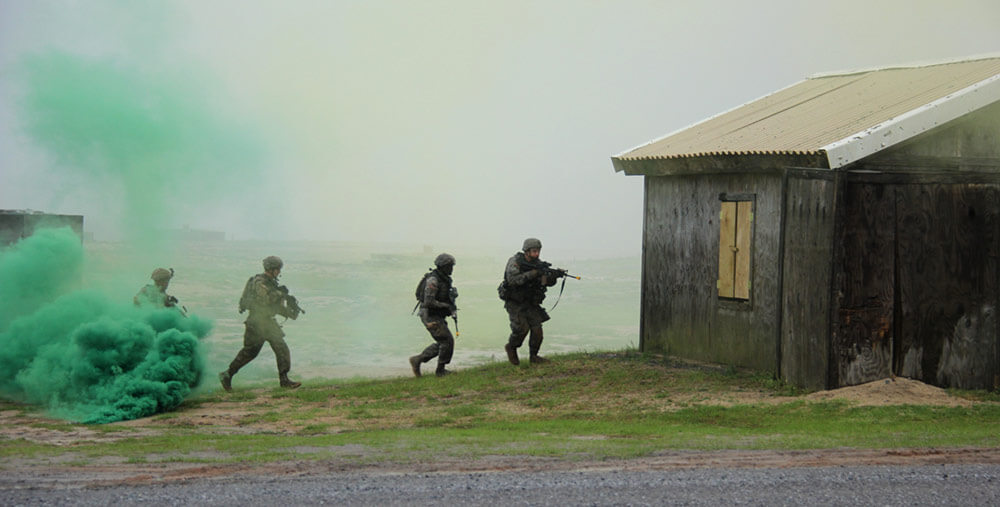
Participating Soldiers prepared for the rotation for almost two years, focusing on fundamentals and live-fire training.
“We did a lot of individual training and foundations, and then small unit training up to platoon level,” COL Smith said.
“We did two cycles of live-fire training, two cycles of artillery live-fire tables and other brand-specific, live-fire training. We also did a lot of situational training exercises to prepare.”
While lengthy, the in-depth preparation was vital to the success of the rotation.
At Fort Polk, Soldiers trained in “the box,” a large training area where Soldiers are exposed to conditions and situations they might face during deployment.
The high levels of stress Soldiers experienced in “the box” were daunting, but beneficial to the growth of the Soldiers and brigade overall.

The training exposed Soldiers to challenges they would not likely have been exposed to in any other environment – highlighting certain weaknesses within the brigade. By exposing those weaknesses, Soldiers could address them and leave the rotation stronger.
“It was a pretty brutal training,” said SGT McInnis. “But I walked out with a much higher level of competence.”
The rotation was a Decisive Action Training Environment (DATE), which allows Soldiers to use combat tools to solve tactical problems in a wide range of real-world scenarios. The scenarios are based on actual threats across the Army’s operational environment, rather than a training scenario derived from a known deployment location.
“DATE is more complex,” COL Smith said. “So it’s like practicing harder than you have to play on game day. There’s tremendous benefit in that, [as we] prepare for the known missions that we’re going to carry out at some point in the future.”
While the Soldiers may not have been excited to bear the increased level of training, its benefits were immediately discernable.
“I was quick to remind everybody that because this is harder, everything is directly applicable to being in Afghanistan,” COL Smith added.
“It prepared me,” explained SGT McInnis. “It throws you curveballs. You have to think outside the box, do critical thinking and be creative. That really helps you to adapt to each scenario dynamically.”
The rotation also gave some Soldiers the opportunity to experience brigade-level training that they may not have been exposed to in the past.
“It was high tempo,” said SFC Charles Lancaster, an infantryman with the 48th. “A lot of long days and long nights ran together. It was different for me, because I spent most of my career at the company level. Coming to the brigade headquarters, I got to experience how the brigade operates at the higher level. It was a learning curve for me. I learned a lot about what a first sergeant does at the company level versus at the brigade headquarters level.”
SFC Lancaster said he appreciated the lessons learned from the JRTC rotation, as those lessons would inevitably translate into future deployments.
“It gives us an assessment of where we are individually and collectively as a group,” he explained. “We learned what [areas] we needed to work on as an organization and as individual Soldiers. It taught me how I needed to work on some things going forward, especially with a deployment on
the horizon. I have a whole book of notes that I took while I was there to look back on how I can improve, what worked and what didn’t work.”
The extensive range of the exercise’s training components not only exposed, but highlighted the potential for logistical challenges to arise. One such challenge is communication, which is common in terms of logistics and coordination, but COL Smith said he was impressed with the brigade’s performance.
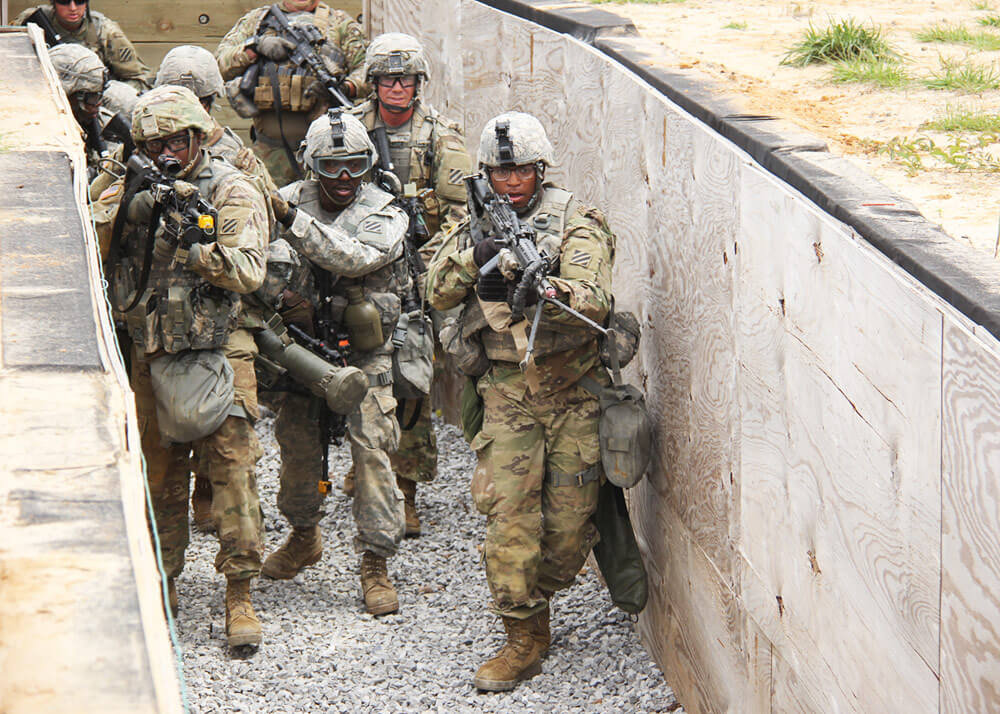
“We did a pretty good job on communications, which is one of the harder things we do,” he noted. “Our ability to maintain connectivity on our different systems, defend ourselves from [notional] cyberattack and electronic warfare, and remain functional against those enemy capabilities – it’s complicated and we did okay at it. That was a proud moment for us.”
SFC Jonathan McLaughlin, an information technology specialist for the 48th, had the role of building the brigade-task-force-sized element with wide area network (WAN) and local area network (LAN) connectivity. Connecting and integrating the various equipment was a difficult task, but SFC McLaughlin rose to the challenge.
“It went really well,” remarked SFC McLaughlin. “We validated how well our systems can work when maintained properly by trained operators. We definitely learned a lot when it comes to integrating other State’s equipment and what [happens when] equipment breaks down or is unavailable. Being able to take another unit’s or another State’s equipment and integrate it into our network was probably the best thing that came out of JRTC.”
SFC Lancaster noted a moment of personal pride during the exercise.
“Being out in the field, there were some challenges in picking a site,” he commented. “We had to pick where we were going to set up and we had to be camouflaged to not be found. The first couple of spots we picked were not so great. It was at the last spot that we ended up putting the technical operation center, and the enemy could not find it. I was recognized by the brigade commander for that.”
While tackling the ups and downs of the rotation, Soldiers received feedback and guidance from observer-controller-trainers who monitored the Soldiers’ performance. Overall, Soldiers walked away feeling as though they had become better Soldiers – fully equipped to handle their approaching deployment.
“When deployment comes, I feel like we’ve got a head start on how to approach it, what obstacles we might run into and what things will help facilitate success much quicker and easier,” SFC McLaughlin said.
COL Smith commented with praise on the positive attitudes the Soldiers of the 48th displayed throughout the exhausting rotation.
“The morale of our task force right up through the end of the exercise was just fantastic,” explained COL Smith. “I always find it inspiring when I go out during battlefield circulation and see the companies out in the woods or fighting the enemy. Even though they were tired and hungry, the mentality of our Soldiers was just awesome. It was great to see.”
Keeping a strong mentality throughout the training was an important quality needed to perform well not only in the rotation, but also in their military careers.
COL Smith went on to explain why the mentality aspect of the Soldiers’ performance was so vital for the brigade.
“Fighting a near-peer enemy in that DATE environment is very hard and it requires a significant mindset shift or significant cultural shift that is going on right now within the Army,” COL Smith explained. “Gaining that perspective and coming away with a kind of ‘oh, man that was hard’ experience was probably the biggest takeaway, and maybe one of the most important ones for us long term.”
COL Smith also noted the importance of Soldiers gaining the experience of the type of high-stress, complex-environment training offered through a CTC.
“We as a National Guard cannot overstate the importance of going through a CTC experience,” he said. “Leadership says about 80 percent of [Soldier growth] comes from experiential development. Going through this experience is tremendously important in terms of making us better Soldiers and better organizations.”
By Staff Writer Tatyana White-Jenkins
